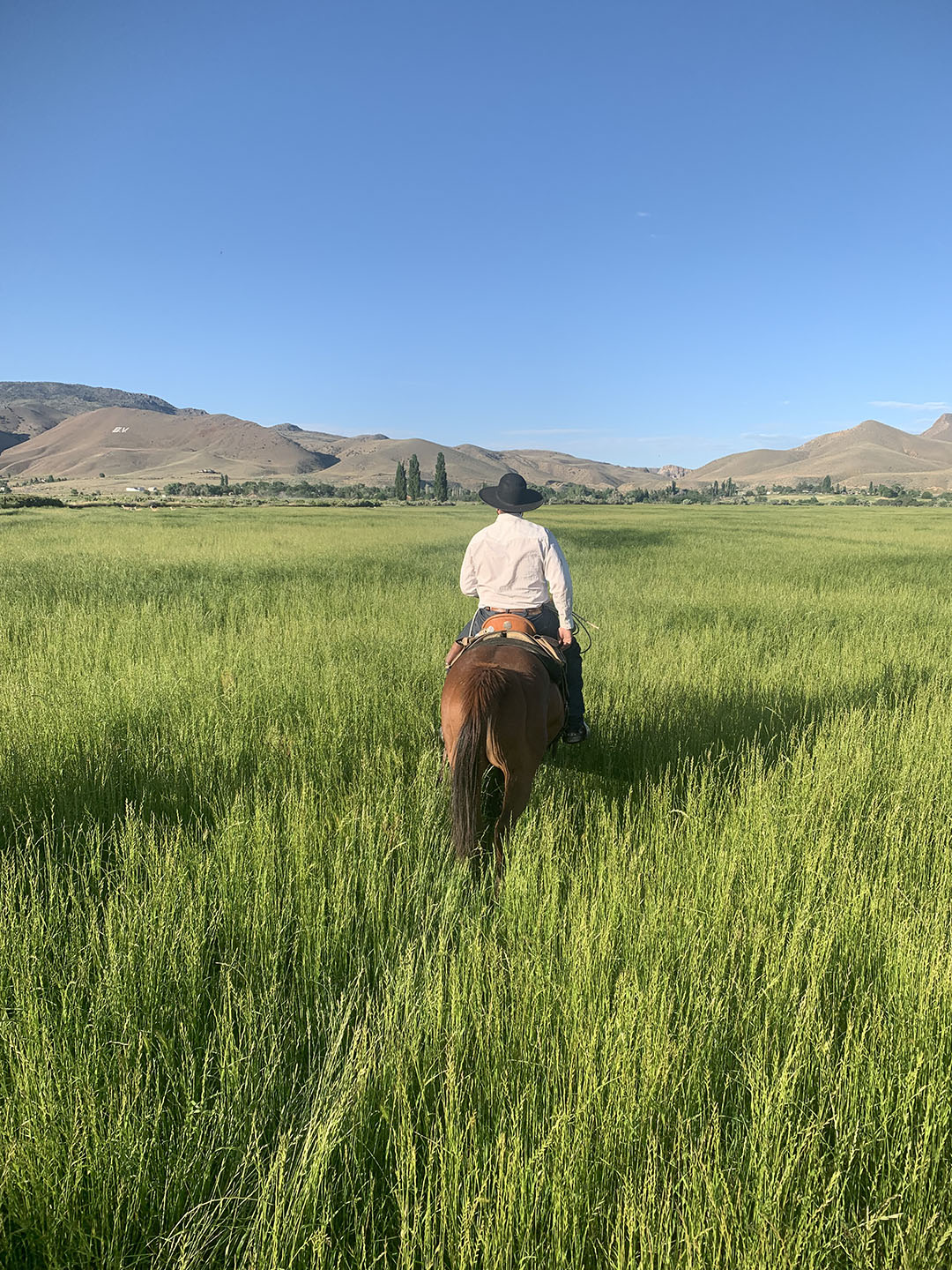The solution to the climate crisis might be closer than you think.
Climate crisis. Climate change. Global warming.
Whatever you choose to call it, you know it’s already happening. Record storms, wildfires, floods, heat waves, droughts, melting ice caps, rising sea levels … all have become commonplace in our daily news. There’s lots of concern but not much action, it seems. And the situation just keeps getting worse.
Well, here’s a shocker for you: There may be a simple way to solve the problem that’s as close as the dirt under our feet. In fact, it literally is the dirt under our feet. The very soil that fills our earth has the unique, natural ability to capture and sequester carbon for thousands of years.
Why is this important? The increased levels of atmospheric carbon dioxide — produced by humans, animals, and the burning of fossil fuels — is the primary cause of global warming. If we are able to draw down and capture that carbon and store it in the ground where it actually serves a beneficial purpose, we could solve the problem of climate change.
Healthy soil, in collaboration with the healthy plants it would grow, could do that. It has the capacity to sequester our legacy load — the trillion tons of carbon dioxide that we’ve already pumped into the atmosphere — as well as whatever we generate in the future.
And the best news is that nature already has this perfect virtuous cycle in place. We emit carbon dioxide, then plants absorb the carbon and send 40 percent of it through their roots to feed soil-based microbes, which, in turn, use the carbon to build healthy soil. To complete this circle, these micro-organisms deliver the exact nutrients each plant needs. Healthy soil, healthy plants, healthy humans, healthy atmosphere. Perfect!
Maybe not. The problem is that most of the earth’s soil is no longer healthy. Years of tilling, synthetic fertilizers, insecticides, fungicides, herbicides, and other conventional farming practices have disturbed, weakened, or killed the natural microbes that are necessary for soil health and this miraculous, natural process to occur.
In fact, all our soils that have been subjected to conventional agriculture are now almost completely devoid of these vital micro-organisms. To make up for that, our food producers continue to till this dead dirt and throw on even more of the very chemicals that caused the problem. Sadly, we’ve replaced nature’s virtuous, healing cycle with modern farming’s destructive vicious cycle.
In other words, we’ve gotten in nature’s way, and now we’re paying the price for it: global warming.
Back to the Future
Fortunately, an exciting and growing movement is underway, in which conservationists and agronomists, in partnership with concerned farmers and ranchers, are tirelessly working to save our soil in an effort to save the planet. They are practicing and promoting regenerative agriculture — the production of crops and livestock in a manner that actively improves and restores the soil to the natural balance that Mother Nature intended.
Regenerative agriculture is a holistic approach based on pre-modern farming practices that work in cooperation with natural systems rather than against them. In essence, these practitioners believe that the future of farming, and indeed humankind, relies on understanding and replicating the ways that nature successfully functioned in ancient times.
The basic practices of regenerative agriculture include:
- No or minimal tilling to avoid disturbing the microbial substructure of the soil
- Building soil health by increasing crop diversity
- Keeping the ground covered and living roots in the soil year round to increase water retention and prevent erosion
- Eliminating use of synthetic chemicals
- Using regenerative grazing management for livestock
By adopting these changes, advocates of regenerative farming believe we can heal our soils and enable them to, once again, draw down and capture atmospheric carbon. In the process, we will eliminate the cause of global warming, make our food more nutritious and plentiful, and make our water and air cleaner and our people healthier. Quite simply, they say, the very practices that will heal our soils also will heal our planet.
The greatest challenge is getting conventional farmers and, especially, large industrial producers to understand the importance of adopting a new mindset and changing their current practices. What might help convince them? Economics.
Regenerative agriculture grows more food per acre than conventional farming. It also eliminates costly chemical usage. It is estimated that, by switching to this practice, American farmers could increase their profits by more than $100 billion annually and virtually eliminate the need for government subsidies.
A number of local farmers and ranchers, including some in the greater Reno-Tahoe area, already have embraced the regenerative agricultural model and are eager to spread the word.
Grazing for Change
Spencer Smith runs his family’s 1,800-acre cattle ranch in the high desert of Surprise Valley, Calif., about 200 miles north of Reno.
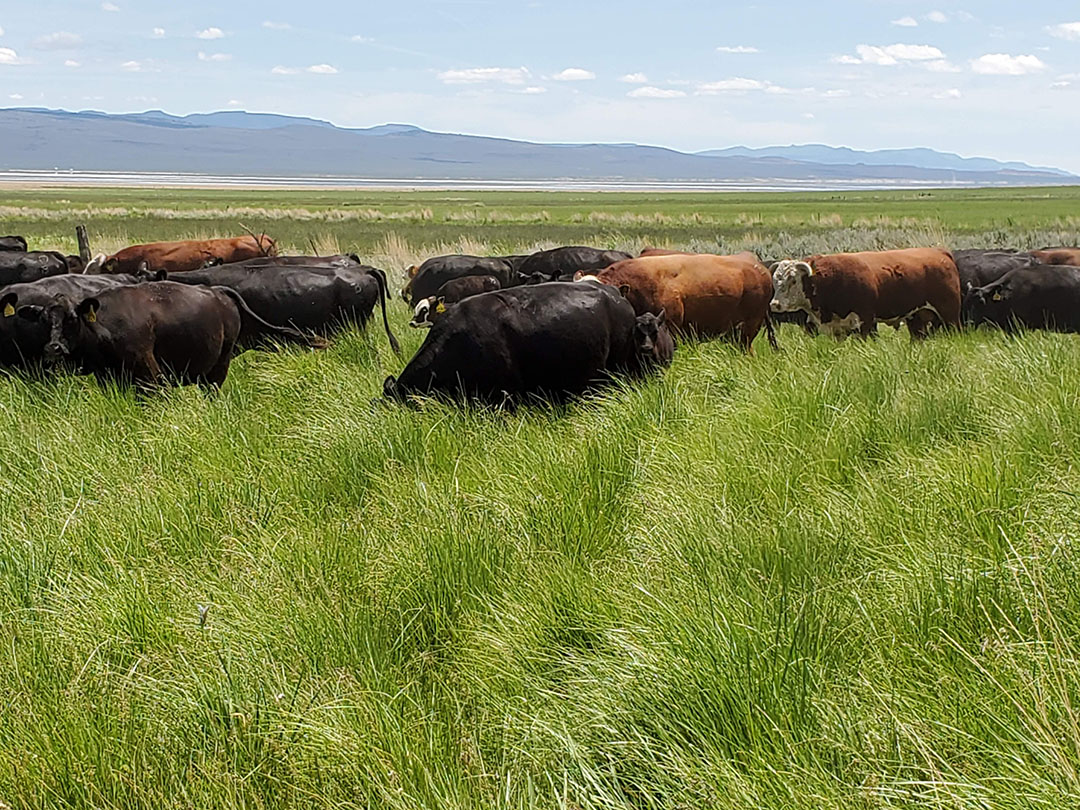
Smith possesses an agribusiness degree and years of ranching experience. But by 2014, his frustration with drought and dwindling feed production led him on a search for a better way to ranch than the conventional techniques he’d been practicing. He found it at the Savory Institute, a world-renowned organization that advocates holistic livestock management that revitalizes land through regenerative grazing.
The Savory theory of livestock management aims to replicate the ancient, natural cycle that predates modern ranching practices. In regenerative grazing, animals are kept in tight herds. They are limited to small sections of pasture and moved frequently, leaving the forage only lightly clipped, allowing it to fully recover.
Following that model, Smith now has 30 pastures on the same amount of land where he formerly had only 10. His cattle are moved every week to 10 days and never returned to the same area until that vegetation has fully recovered. An added bonus, he says, is the equal distribution of dung and urine, which adds to the available nutrients in the soil.
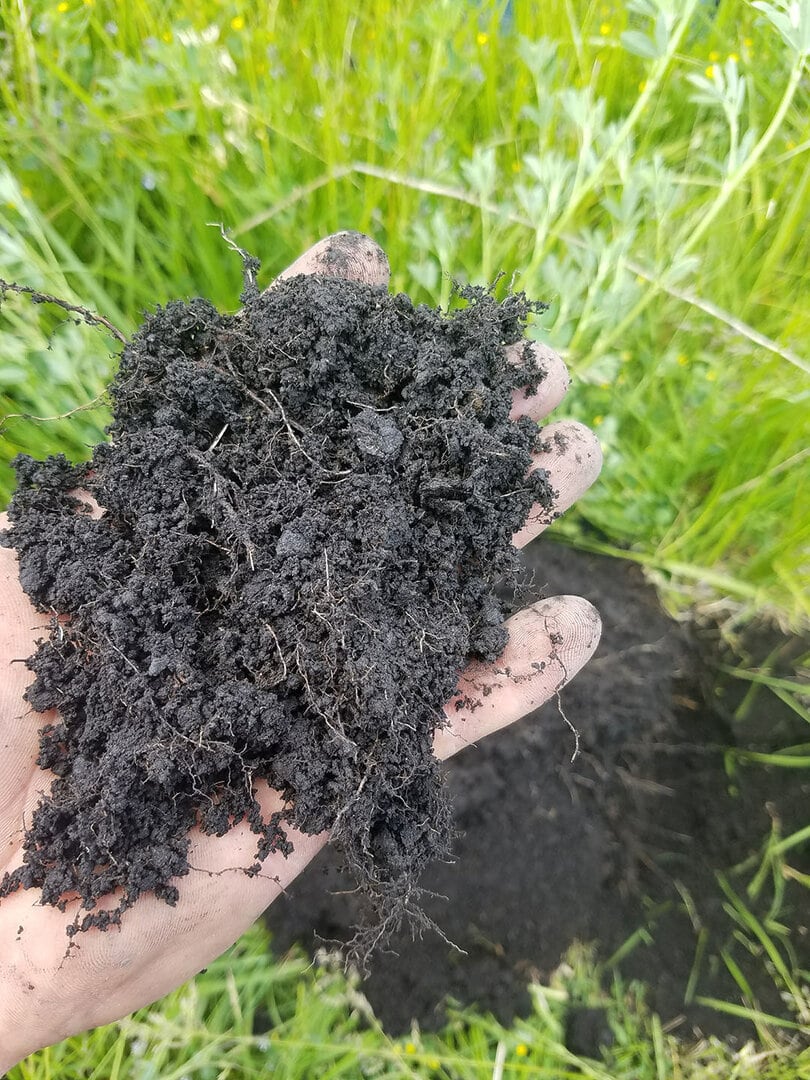
As a cattle rancher, Smith appreciates that the Savory Institute regards cows as an integral part of the climate solution, not the enemy of it. The problem isn’t the animal, the theory goes — it’s where the animal is raised. We know that animals kept in feedlots create massive amounts of greenhouse gases. Conversely, numerous recent scientific studies have validated that animals grazing on living plants, adhering to holistic regenerative management practices, offset net greenhouse emissions by between 80 and 100 percent.
In addition to short-duration/high-intensity grazing, Smith also practices other regenerative strategies such as no-till farming, inter-seeding of pastures for diversity, using cover crops, applying compost, and avoiding synthetic chemicals. As a result, he says, his ranch is healthier and more productive than ever and continues to improve every year.
All his cattle are 100 percent grass fed, lifetime grazed on pastures under his management, and sold under a brand-new global endorsement that he helped to create in collaboration with the Savory Institute. Land to Market EOV (Ecological Outcome Verification) is a regenerative agriculture certification that recognizes agricultural producers who have met rigorous standards for improving soil and ecosystem health.
In addition to his own ranch, Smith now manages several others and presently runs about 700 head of cattle combined. He works part-time as a regenerative agriculture and soil health consultant, and, in addition to his beef, he assists in marketing regenerative-agriculture-certified clothing and leather products through a number of name-brand labels.
“What Savory Institute brings to the table is a way to maximize benefits for the local farmers, ranchers, and community,” Smith says. “It teaches a management plan that increases production and profitability dramatically while helping the environment as well.”
Brewing Better Soil
Emily Fulstone is an attractive, young, blond woman who often isn’t taken seriously by older, hardscrabble ranch managers. But this seventh-generation Nevada rancher knows her business and can hold her own with the best of them.
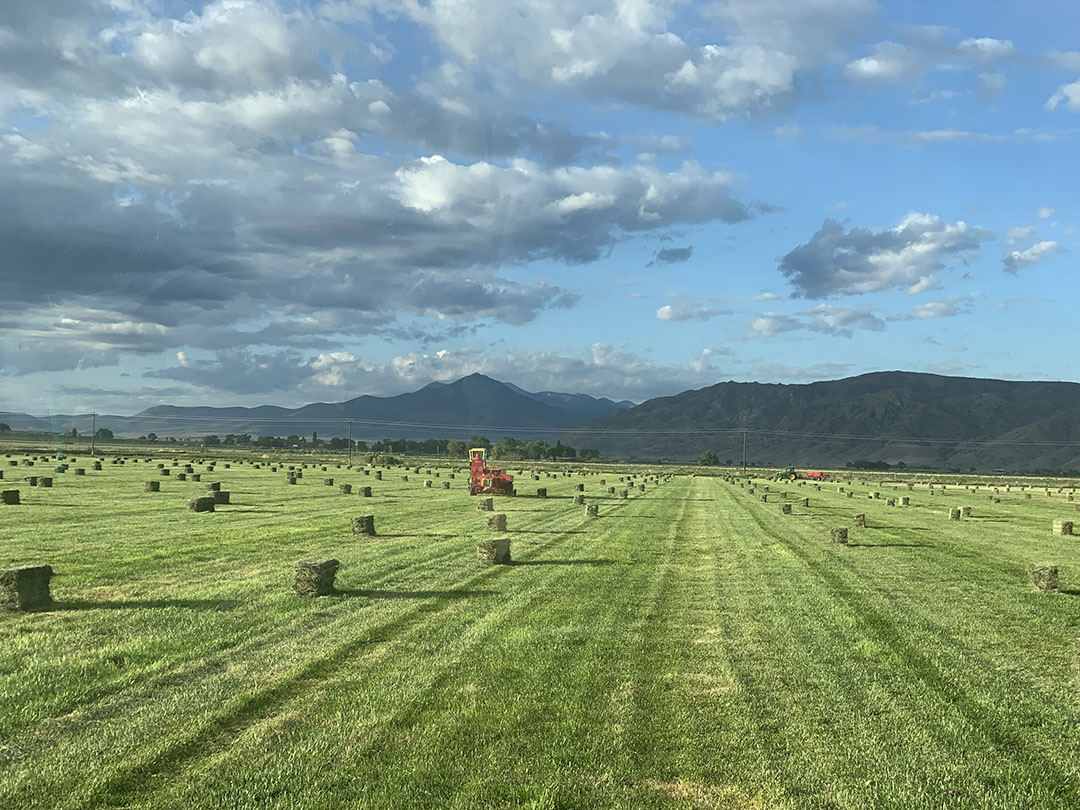
After graduating from the University of Portland in Oregon with a degree in environmental science, she returned to the family ranch, R.N. Fulstone Co., in Smith Valley. Her homecoming was a rude awakening for someone who now had a much better understanding of farming ecosystems.
She saw through new eyes that her family’s operation was using tons of fertilizer, pesticides, and herbicides. Its water retention was awful. And looking back at farm records, she realized that the family and staff were using eight times the amount of fertilizer they had used in the 1940s.
“There was so much I saw that just seemed wrong,” Fulstone says. “It just didn’t sit right with what I learned in school about how plants had evolved for thousands of years to work with bacteria and insects in order to thrive.”

She started doing a lot of research, looking for more eco-friendly practices, and she came across studies by Elaine Ingham, a leading international soil biologist. Fulstone found Ingham’s work with worm tea fascinating.
Worm tea is a natural liquid fertilizer made from worm castings (a fancy name for worm poop). It’s full of nutrients and beneficial microbes that build the soil, create healthy plants, and act as an amazing natural pesticide.
She convinced her dad that they needed to buy a 26-foot-long worm table, a 500-gallon water tank to steep the worm castings, and a whole lot of worms. In no time, she was brewing up worm tea like a pro. She admits with a laugh that some neighbors probably thought she was a bit crazy.
Nonetheless, the results speak for themselves. Since 2016, the Fulstones have sprayed this highly concentrated microbial liquid on their fields — plants and all. The results have been dramatic.
“We’ve greatly increased the amounts of carbon we’ve sequestered in our soil,” Fulstone says. “Water retention has vastly improved. We’re raising a much higher quality of feed product. We’re not using chemicals that are detrimental to our health, we’re using far less fertilizers, and we’re not using pesticides at all. And we’re making a lot more money doing it.”
She points out that the benefits are not just the increased income, but also the decreased labor and cost. In 2020, a huge aphid infestation was destroying crops throughout their valley. Neighboring farms had their crops dusted with pesticides at least three times over that summer, at significant cost to both their health and wallets. Meanwhile, Fulstone simply sprayed her ranch’s crops, one time, with the worm tea, and in three days the aphids were gone for good. The nutrients in the worm tea had helped the plants raise their own sugar levels and defend themselves from the aphids, the bodies of which cannot process sugar.
Fulstone’s family now farms up to 4,000 acres, which includes its own ranch and those they manage for other owners. Fulstone also does part-time consulting with other farmers, teaching them regenerative practices. Sometimes that goes well, and sometimes not.
“Being a 30-year-old blond woman, telling men in their 60s that everything they know about farming is wrong, generally goes over about as well as you might think,” Fulstone says with a laugh.
Still, she persists. It’s too important not to, she says.
The Little Farm That Could
Zach Cannady is an optimist to the nth degree. He embraces ideas that the rest of us would say are impossible and makes them a reality.
In 2015, Cannady and his wife, Kasey Crispin, started Prema Farm, a certified-organic, no-till operation dedicated to regenerative agriculture practices. Unlike the Smith and Fulstone properties, this farm is neither inherited nor large. In fact, it’s a rented parcel of land located at an altitude of 5,300 feet, 12 miles north of Reno — and it is barely 1.5 acres in size.
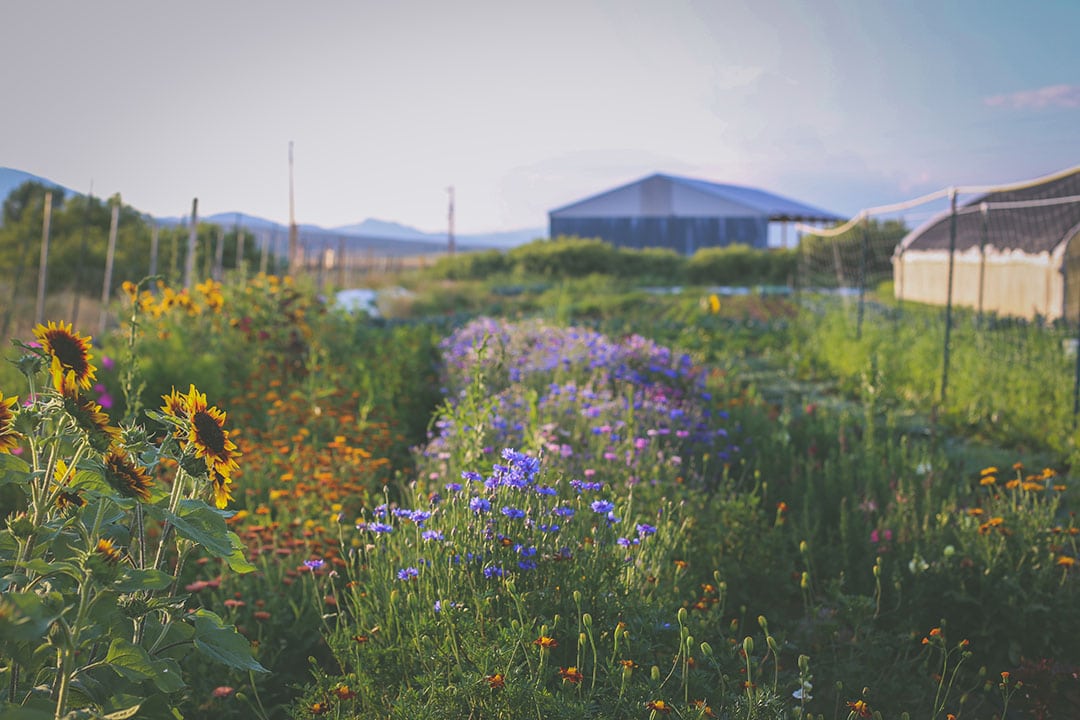
Cannady was inspired by the work of Conor Crickmore, a pioneer of no-till, small-scale/high-production farming. Crickmore started his iconic, organic Neversink Farm in New York, with 1.5 acres of leased land, and developed it into one of the most productive and profitable small-scale farms in the nation. Cannady was confident he could follow in Crickmore’s footsteps … and indeed he has.
Seven years later, Cannady’s 1.5 acres have become a highly prosperous, thriving example of what a small, regenerative, organic farm can be. It now boasts four greenhouses and two caterpillar tunnels, equaling 1,700 square feet of protected agriculture, in addition to rows of seasonal outdoor crops.
Due to regenerative practices and innovative farming techniques that continue to enhance the soil and improve efficiency, Cannady’s little farm is as productive as one many times its size, yielding premium quality, organic produce year round. Thanks to its 80-customer CSA and the additional sales outlets of Great Basin Community Co-op in Reno and two weekly farmers’ markets, annual sales are nearly $300,000. And Cannady is confident that $500,000 is not out of the question in the future — amazing revenue for such a small farm.
“It’s really important for other potential regenerative farmers to know that there’s a huge market in this, and there’s great unrealized potential,” Cannady says. “We’re not going to convince conventional farmers to adopt these practices if we can’t show them there’s a benefit to their bottom line.”
And that’s where his focus is now — spreading the word and teaching others about the many climate, health, social, and economic benefits of regenerative agriculture. Cannady wants Prema Farm to become an incubator for high-desert farming education. He’s eager to teach others everything he and Crispin have learned over the last seven years, even sharing their mistakes so others don’t have to start off where they did.
In line with that goal, Prema Farm offers three intensive, hands-on internships each year. It’s obvious that interest in regenerative ag is strong, and so is Prema’s reputation. The couple received 75 internship applications from all over the country for the upcoming growing season. Cannady also is actively working with several local farmers, helping them to make the organic, regenerative transition.
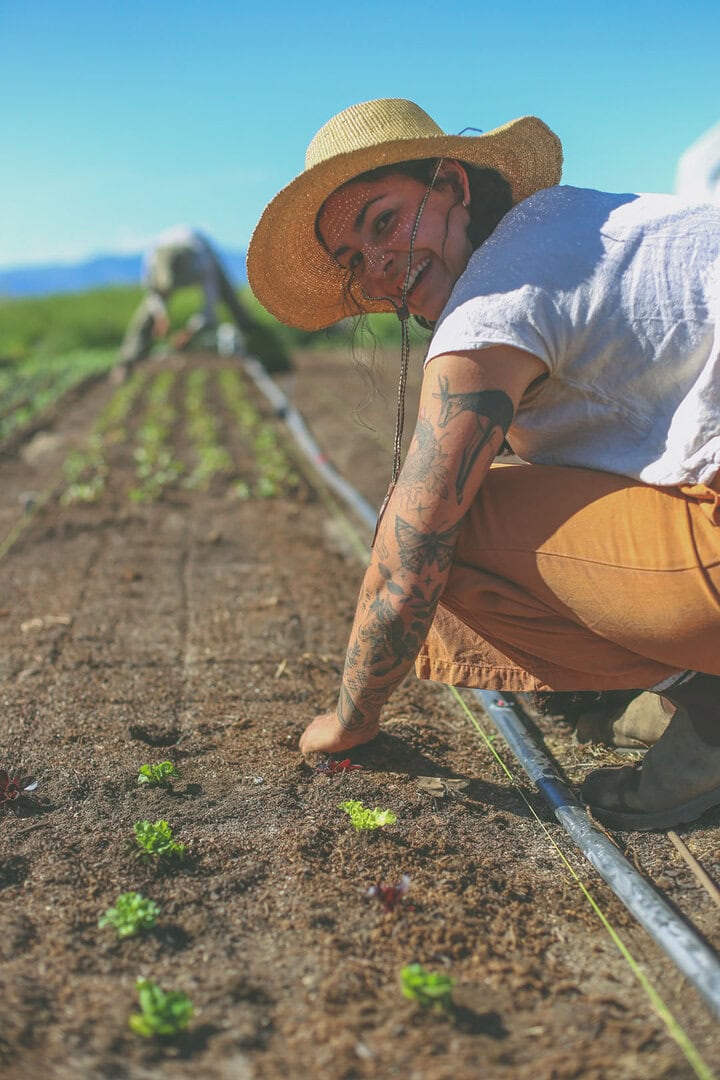
Organic labeling is another issue Cannady is eager to address. While Prema always has touted the Certified Organic label, recently it added a second one: Regenerative Organic Certified, as issued by the Real Organic Project. This designation distinguishes organic produce grown in soil and natural sunlight from those that are not soil-based, such as hydroponic vegetables and those grown under artificial light, which have been allowed to be certified as organic under the U.S. Food and Drug Adminstration.
The new ROC labeling reflects the concern of regenerative agriculture advocates, who believe that food raised naturally, drawing vital nutrients from the soil and experiencing photosynthesis, is not only the most nutrient-dense and healthful for humans and animals, but also is a vital component to rectifying the climate crisis.
“Regenerative agriculture is the answer to so many things for me,” Cannady says. “By implementing ways to bring vitality and health back to the soil and our food, we will be healthier, and the planet will be healthier, too.”
We’re running out of time. What do we have to lose by doing this? What do we have to lose if we don’t?
Reno writer Barbara Twitchell learned so much from the people she interviewed for this story. She’s truly grateful for people like them who are working to ensure the health and future of our planet.
SIDEBAR
What Can You Do?
You’re not a farmer or a rancher? There are ways you can help support the soil and regenerative agriculture movement.
- Plant something: a garden, a tree, flowers.
- Do NOT use synthetic chemicals on your lawn or garden! Instead:
- Fertilize with compost, manure, or an Organic Materials Review Institute (OMRI) rated fertilizer.
- Use natural pesticides (ladybugs, neem oil, your hands, etc.).
- Weed manually or apply diluted white vinegar water.
- Disturb the soil as little as possible as you plant.
- Learn to compost.
- Shop farmers’ markets to support local farmers.
- Seek out Regenerative Organic Certified products and farmers.
RESOURCES
Kiss the Ground
This excellent documentary—available on Netflix—explores the role regenerating soil can have on the climate crisis.
Kissthegroundmovie.com
Elaine Ingham Soilfoodweb.com
Emily Fulstone Fulstoneranches.com
Neversink Farm Neversinkfarm.com
Prema Farm Premafarm.com
Savory Institute Savory.global
Spencer Smith Spencersmithag.com
